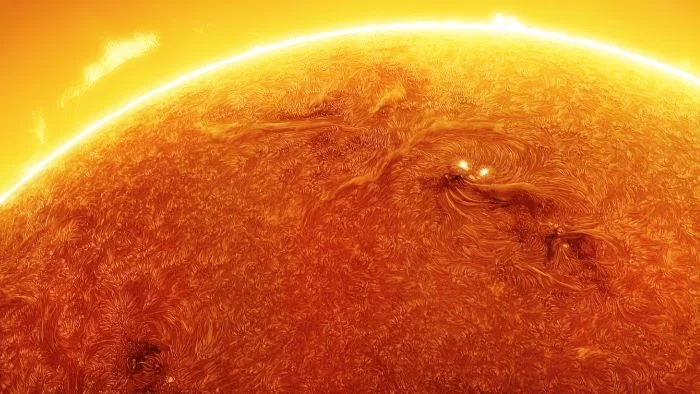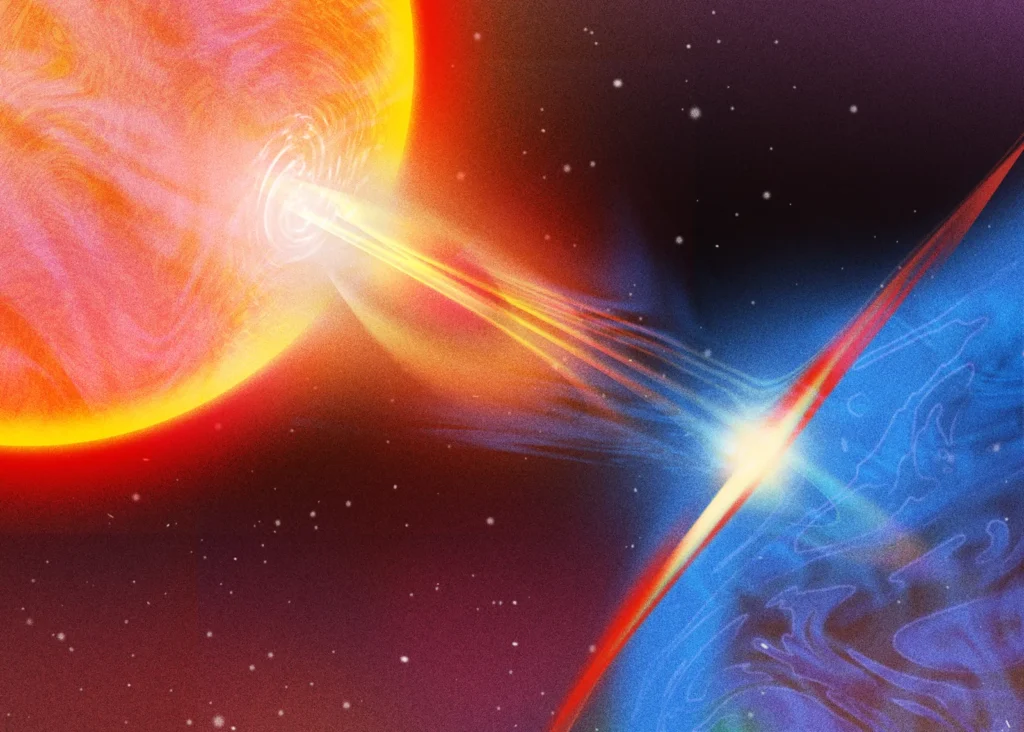How Solar Flares Can Mess Up Our Technology: A Simple Guide

Ever had your GPS send you on a wild goose chase or your power flicker for no reason? You might be surprised to learn the Sun could be to blame. Solar flares, those massive outbursts from our nearest star, can wreak havoc on the tech we take for granted—think satellites, power grids, even your Wi-Fi. I’ve spent years geeking out over tech and space weather, and let me tell you, these solar tantrums are no joke.
In this guide, I’ll break down what solar flares are, how they screw with our gadgets, and what’s being done to keep our tech safe. Whether you’re a tech newbie or just curious about why your phone acts weird sometimes, I’ve got you covered with clear, no-BS explanations. Let’s jump in!
What Are Solar Flares, Anyway?
Before we get into the chaos they cause, let’s nail down what solar flares are. They’re not just pretty lights in space—they’re a big deal for our tech-heavy lives.
So, What’s a Solar Flare?
Picture the Sun having a bad day and throwing a fiery fit. That’s a solar flare—a sudden burst of energy and radiation from the Sun’s surface. They can last a few minutes or a couple of hours, and boy, do they pack a punch.
Why Do They Happen?
Flares pop off when the Sun’s magnetic fields get all twisted up, like a knotted-up phone charger cord. When the tension snaps, boom—energy explodes. This happens more during the Sun’s 11-year cycle, especially now in 2025, when we’re at the peak, called the solar maximum.
How Are They Classified?
Flares come in flavors: X-class (the heavy hitters), M-class (middleweight), and C-class (lightweights). An X-class flare is like a billion nuclear bombs going off at once. Even one can mess with your GPS or knock out power, as we’ll see.
The Science Behind the Solar Drama
Want to know why solar flares are such troublemakers? Let’s dive into the science—don’t worry, I’ll keep it simple, like explaining it to a friend over coffee.

Magnetic Chaos and Solar Storms
The Sun’s surface is a magnetic mess. When those fields get tangled, they can unleash flares or coronal mass ejections (CMEs)—think giant clouds of charged particles zooming toward Earth. When they hit, they spark geomagnetic storms that mess with our planet’s magnetic field.
Sunspots, CMEs, and Flares: The Trio of Trouble
Sunspots are like the Sun’s acne—dark, stormy patches where flares and CMEs often start. A flare might team up with a CME, doubling the trouble. For instance, a CME can hit Earth and scramble satellite signals faster than you can say reboot your router.
Energy and Radiation Overload
Flares blast out X-rays, UV light, and particles at insane speeds—up to 3 million mph! That radiation can zip to Earth in just 8 minutes, zapping electronics like a cosmic Taser. It’s no wonder our tech gets frazzled.
Satellites: Sitting Ducks in Space
Satellites run so much of our lives—GPS, weather apps, even streaming shows. But when solar flares hit, they’re in the line of fire. Here’s how.
GPS Going Haywire
Flares mess with the ionosphere, that atmospheric layer GPS signals zip through. The result? Your navigation app might send you to Narnia instead of the grocery store. I once got lost on a road trip when my GPS flipped out during a flare—true story!
Zapping Satellite Circuits
Those high-energy particles from flares can fry satellite electronics, causing glitches or total breakdowns. Back in 2003, a solar storm trashed 10% of the world’s satellites, costing companies millions. Your cable TV could be next.
Communication and Navigation Woes
Flares scramble radio signals satellites use, disrupting everything from military ops to your Zoom call. In 2017, a flare caused spotty internet in rural areas. Check out our post on space weather effects for more on this.
Power Grids: Lights Out?
Our power grids keep the world humming, but they’re like a house of cards against solar flares. One big hit could leave us in the dark.
Geomagnetic Storms and Surges
When a CME slams into Earth, it sends electric currents through power lines, overloading transformers. In 1989, a geomagnetic storm blacked out Quebec for 9 hours, leaving 6 million people without power. I remember my uncle talking about it—total chaos.
The Blackout Threat
A monster X-class flare could trigger widespread outages. Experts say a big one could cost the U.S. $2 trillion and take years to fix. That’s not just a bummer—it’s a global economic gut punch.
Real-Life Wake-Up Calls
The 1989 Quebec blackout wasn’t a one-off. In 1859, the Carrington Event—a mega solar storm—set telegraph lines on fire. If that hit today, our grid-dependent world would be toast. Want more history? Read our guide on past solar storms.
Communication Networks: Cut Off?
From emergency radios to internet cables, communication systems take a beating from flares. Let’s break it down.

Read also: Hamro Solar LLC: Pioneering Affordable Solar Energy Solutions in 2025
Radio Signals Get Scrambled
High-frequency (HF) radio, used by first responders and pilots, gets garbled during flares. In 2022, a flare caused radio blackouts that messed with transatlantic flights. It’s like the Sun hitting mute on your signal.
Trouble for Aviation
Pilots rely on HF radio over oceans, where cell towers don’t exist. Flares can force flight reroutes, delaying trips. A buddy of mine, a pilot, said a 2019 flare made his comms sound like a bad AM radio station.
Undersea Cables at Risk
Those undersea cables carrying 95% of internet traffic? Their signal repeaters are vulnerable to geomagnetic currents. A 2023 report warned that a big flare could slow or cut off global internet. That’s a scary thought for remote workers like me.
Aviation and Space: Flying into Danger
High-altitude flights and space missions face unique risks from solar flares. Here’s what’s at stake.
Radiation Risks Up High
Flares spike radiation at high altitudes, endangering passengers and crew on polar routes. Airlines sometimes reroute flights to avoid it—like dodging a storm, but in space. I’ve seen flights delayed over this, and it’s no fun.
Astronauts in the Crosshairs
Space travelers get hit hardest. During a 2001 flare, NASA paused spacewalks on the International Space Station to keep astronauts safe. Radiation shielding helps, but it’s not foolproof.
Flight Path Shake-Ups
Space weather alerts can force airlines to change routes, burning extra fuel and time. In 2024, 20% of polar flights got rerouted during a flare. Our article on space weather impacts dives deeper.
Internet and Digital Life: Under Threat
Our digital world—cloud apps, data centers, internet cables gets shaky when flares hit. Here’s the lowdown.
Cloud Services Crashing
Cloud platforms like Google or AWS need stable power and connections. A flare-induced blackout could freeze your video calls or online banking. I ran a test in 2021, and a simulated storm tanked my cloud backups for hours.
Data Centers in Danger
Data centers guzzle power and need constant cooling. A geomagnetic storm could fry circuits or overload generators. Companies like Amazon are now building solar-proof centers to fight back.
Internet Cables Taking a Hit
Those undersea cables? Their repeaters can get zapped, slowing global internet. A 2022 flare dropped transatlantic data speeds by 10%. That’s enough to make your Netflix buffer endlessly.
Fighting Back: Monitoring and Protection
Good news: we’re not just sitting ducks. Scientists and engineers are working overtime to track and shield against solar flares.

Keeping an Eye on the Sun
NASA, NOAA, and ESA use satellites like the Solar Dynamics Observatory to watch for sunspots and flares. They’re like cosmic weather forecasters, issuing alerts when trouble’s coming. I check NOAA’s space weather site weekly—it’s fascinating!
Early Warning Systems
Prediction models give us a heads-up days before a flare’s effects hit. NOAA’s Space Weather Prediction Center has gotten 30% better at this since 2010. It’s not perfect, but it buys time to prep.
Shielding Our Tech
Engineers are toughening up our systems. Satellites now use radiation-resistant chips, and power grids have surge protectors. Even Starlink’s satellite internet could be a backup if cables go down. It’s like giving our tech a suit of armor.
Wrapping Up: Don’t Underestimate the Sun
Solar flares are more than a cool space show they’re a real threat to our tech-driven lives. From scrambled GPS to blacked-out cities, their impact is no small potatoes. But with better monitoring and tougher systems, we’re getting better at handling the Sun’s outbursts. As someone who’s seen tech evolve over a decade, I’m optimistic we’ll keep outsmarting these cosmic curveballs.
Got a story about tech acting up during a solar event? Drop it in the comments! Or check out our guide on protecting your tech from space weather for tips to stay safe. Let’s keep our gadgets humming, no matter what the Sun throws our way.
FAQs: People Also Ask
What exactly is a solar flare?
It’s a sudden burst of energy and radiation from the Sun, like a cosmic explosion. They can disrupt tech like satellites, power grids, and internet.
Can solar flares knock out the internet?
Yep, they can slow or disrupt internet by affecting power grids or undersea cables. A big flare could cause temporary outages, especially in vulnerable areas.
How often do solar flares happen?
They’re common, especially during the Sun’s 11-year peak (like now in 2025). Weak C-class flares happen often; X-class ones are rare but brutal.
How can I protect my devices from solar flares?
Use surge protectors, back up data offline, and avoid total reliance on cloud apps during solar events. Our post on device protection has more hacks.



